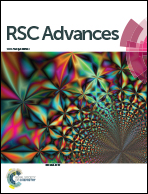Catalytic hydrodechlorination of 4-chlorophenol over a series of Pd–Cu/γ-Al2O3 bimetallic catalysts
Abstract
A series of Pd–Cu/γ-Al2O3 bimetallic catalysts was prepared using the sequentially incipient wetness impregnation method. The catalysts were characterized using X-ray diffraction, temperature programmed reduction, scanning electron microscopy-energy dispersive X-ray, and hydrogen (H2) pulse chemisorption measurements. The influence of Cu on the Pd–Cu/γ-Al2O3 bimetallic catalyst in the catalytic hydrodechlorination (HDC) of 4-chlorophenol (4-CP) in an aqueous phase in a mixing glass tank reactor was studied using H2 as the reducing agent. Compared with a Pd/γ-Al2O3 monometallic catalyst, adding Cu to modify the Pd catalyst changed the dispersion of Pd particles and surface area of the metals, thereby significantly influencing the catalytic performance in the HDC of 4-CP in an aqueous phase. The results demonstrated that adding Cu to the Pd catalyst improved the dispersion of Pd particles and increased the HDC catalytic activity when the Cu/Pd molar ratio was ≤0.5/1. In addition, the formation of a Pd–Cu alloy in the Pd–Cu bimetallic catalyst inhibited further hydrogenation of phenol, the hydrodechlorinated product of 4-CP. The Cu/γ-Al2O3 catalyst had an extremely low catalytic activity in the HDC of 4-CP; however, it did not catalyze the hydrogenation of phenol to form cyclohexanone.


 Please wait while we load your content...
Please wait while we load your content...